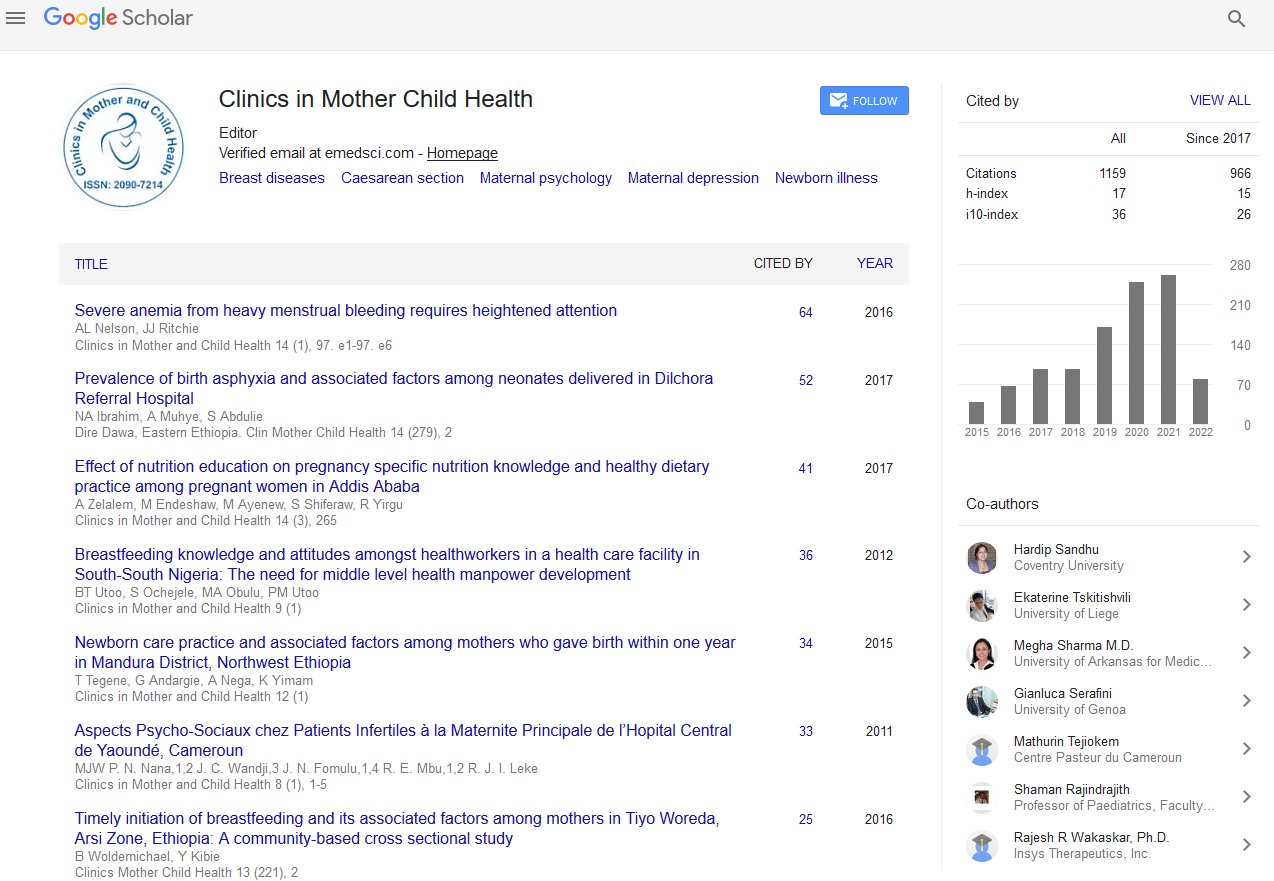Indexed In
- Genamics JournalSeek
- RefSeek
- Hamdard University
- EBSCO A-Z
- Publons
- Geneva Foundation for Medical Education and Research
- Euro Pub
- Google Scholar
Useful Links
Share This Page
Journal Flyer

Open Access Journals
- Agri and Aquaculture
- Biochemistry
- Bioinformatics & Systems Biology
- Business & Management
- Chemistry
- Clinical Sciences
- Engineering
- Food & Nutrition
- General Science
- Genetics & Molecular Biology
- Immunology & Microbiology
- Medical Sciences
- Neuroscience & Psychology
- Nursing & Health Care
- Pharmaceutical Sciences
Special Issue - (2021) Volume 0, Issue 0
Essential Metabolic Issues in Children with Diabetic Nephropathy
Ievgeniia Burlaka*Received: 05-Jul-2021 Published: 26-Jul-2021, DOI: 10.35248/2090-7214.21.18.e357
Description
The expanded predominance of Type I Diabetes (T1D) is known as Juvenile diabetes or Insulin-dependent diabetes which is a chronic condition in which the pancreas produces little or no insulin. Type I Diabetes has several complications which include Coronary Illness, Stroke, Visual impedance, Diabetic Nephropathy (DN) and End-Stage Renal Infection (ESRD).
Acquired metabolic issues are hereditary conditions that bring about digestion issues or metabolic problems. Inherited Metabolic Disorders will have defective gene which results in enzyme deficiency. Metabolism refers to breakdown of complex food into simple compounds by using metabolic enzymes which results in complex set of chemical reactions.
There are several types of inherited metabolic disorders which results in several types of disses especially in children. Some of them are Niemann-Pick disease in which babies develop liver enlargement. Tay-Sachs disease which results in damage of Nerves and Nerve cells, Fabry disease which results in pain in Kidneys and Heart.
Diabetic nephropathy is also a metabolic disorder which results in severe complications of kidneys. Risk factors for this disease include Hyperglycemia (High Sugar levels in Blood), Hypertension (High blood pressure), and Damage to the blood vessels of the retina (diabetic retinopathy), A rise in potassium levels in blood (hyperkalemia).
Diabetics Nephropathy is diagnosed in various methods by using Blood tests, Urine tests, Imaging tests, Kidney biopsy and Renal functioning test. Treatment for this disease includes various medications to control High Blood Sugar Levels, High blood pressure, managing blood Cholesterol levels, Improving bone health and controlling Creatinine and protein levels in urine.
Dialysis can also help you in Diabetic Nephropathy conditions. Dialysis is of 2 types namely Hemodialysis and Peritoneal dialysis. Hemodialysis is a procedure where a dialysis machine and a special filter called an artificial kidney, or a dialyzer, are used to clean your blood. Peritoneal dialysis is removing waste products from blood when kidneys function inefficiently.
The first reason for most hereditary metabolic issues is a quality transformation that happened many, years ago. Each acquired metabolic issue is very uncommon in everyone. Considered all together, acquired metabolic issues may influence around 1 of every 1,000 to 2,500 babies. In certain places, for example, Ashkenazi (Jews of focal and eastern European family line), the effect of acquired metabolic issues is higher.
Diabetic nephropathy is a kidney-related disease of type 1 and type 2 diabetes mellitus. About 25% of individuals with diabetes in the end create kidney malfunction. Diabetic nephropathy influences kidneys capacity to accomplish their typical work of expelling waste items and additional liquid body. The most ideal approach to diabetic nephropathy is by maintaing healthy life style and reducing diabetes and hypertension.
Over the years, this condition gradually harms kidneys sensitive framework. Early treatment of this diabetic nephropathy may help to reduce this condition. Kidney infection may advance from one kidney to another kidney, additionally called end-stage renal disease. Improper functioning of kidney is a dangerous medical condition. At this stage your treatment alternatives are dialysis or kidneys relocate.
Citation: Burlaka I (2021) Essential Metabolic Issues in Children with Diabetic Nephropathy. Clinics Mother Child Health. 18:e357.
Copyright: © 2021 Burlaka I. This is an open-access article distributed under the terms of the Creative Commons Attribution License, which permits unrestricted use, distribution, and reproduction in any medium, provided the original author and source are credited.


